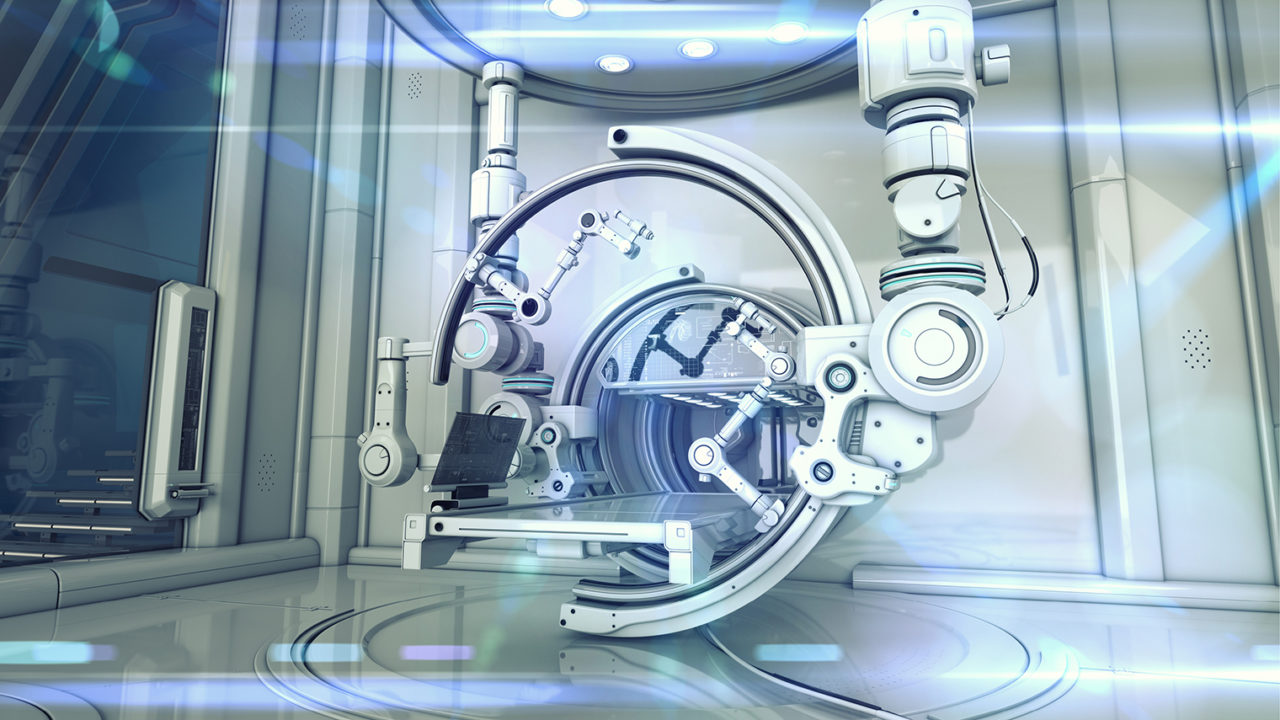Conventional wisdom says that you can’t replace the human touch in terms of medical care, but in our rapidly changing technological environment, it appears that this perception might be changing. Meet the robotics innovations around the world that are shaping tomorrow’s hospitals.
Doctor da Vinci?
The da Vinci Surgical System has been around for a while now, and you may already know it. If you’ve had surgery in the last few years, you may even have encountered it yourself.
The system is not an autonomous robot, but rather a highly advanced set of robotic arms, capable of holding tools, which are operated by the surgeon through a master control panel. The lack of need for direct manual control allows for a high degree of precision – something that is crucial for surgery.
The da Vinci System also allows for remote control. Since nobody needs to directly touch the tools, medical professionals have experimented with using the machine to perform surgery from a long distance. In 2001, the first transatlantic surgical procedure, Operation Lindbergh, was completed, with a surgeon in New York treating a patient all the way in Strasbourg!
This kind of so-called “telesurgery” is not the normal use of the system, but it points the way towards what could be the future of robotics in healthcare: remote treatments, and even autonomous robotic doctors.
Will you soon be treated by Surgeon-Bot 3000? Probably not, but certain developments do point towards these kinds of possibilities. Let’s take a look at the evolution of robotics in the years since the introduction of the da Vinci System.
Watson and friends
Take Watson, the AI system designed by tech company IBM. This system, whose other jobs include air-traffic controller, fashion designer, and farmer, is now breaking into the world of medicine. Watson has been assisting medical staff with the straightforward tasks that often distract from their more specialized work.
Answering patients’ basic questions and adjusting thermostats do not exactly require a medical degree, but hospital employees still usually have to spend a lot of their time on these tasks. Now Watson, in combination with a voice command system, can take over these basic tasks, leaving the staff free to focus on the human element.
But Watson has also been put to work on more complicated medical tasks. Japanese doctors were having trouble identifying exactly what was wrong with one of their patients. After trying all the conventional methods of diagnosis, they were stumped. So they asked Watson for help.
The AI was able to compare the patient’s genetic information to millions of other data points, and in just ten minutes diagnosed the rare form of leukemia from which she was suffering. The doctors claim that Watson effectively saved the woman’s life.
Elsewhere, voice command systems like Amazon’s Alexa are finding myriad uses in the world of healthcare. These systems can be used to deliver information from doctors to patients, and vice versa, as well as to remind staff of safety procedures. And in the UK, Google’s DeepMind technology is being put to use within the NHS.
But all these innovations lead towards the question: Can a robot truly be a medical professional? Chinese authorities, currently pushing hard on AI research in an effort to compete internationally, think the answer is yes.
Meet Xiaoyi, the only robot with a medical license
The artificial intelligence company iFlytek designed a robot named Xiaoyi, and it’s just passed its medical licensing exam. And Xiaoyi didn’t just scrape by but passed the test with flying colors, scoring 456 points when the amount required to pass is just 360.
Xiaoyi is an AI-powered robot designed to collect and analyze patient data. Representatives of iFlytek say that despite its newly acquired medical license, their robot is still designed to play a secondary role in the medical process. They aim to use Xiaoyi to improve efficiency in the Chinese medical system, claiming that it’s a much-needed aid for overstretched practitioners in many of China’s rural areas.
Tomorrow’s hospital
Xiaoyi doesn’t launch officially until next March, but its receipt of a medical license is something of a watershed moment for the application of robotics in healthcare. Taken alongside Watson, the da Vinci System, and other robotics innovations, it’s hard to avoid the conclusion that robots, autonomous or human-operated, are the next step in modern healthcare.
What might a trip to the hospital look like in a decade? They say nursing requires a human touch, but as our HUBOT project showed, this doesn’t necessarily preclude robotics. We’ve seen that the robotization of hospital administration and data entry is already beginning. And soon enough, patients in China might consult with Dr. Xiaoyi rather than their regular GP. How long until we see a fully autonomous da Vinci System?
In our next hospitals, we may be cared for by robots just as much as by humans. Will the nurses of the future be digital too?

keexstvlbn
Muchas gracias. ?Como puedo iniciar sesion?
Muchas gracias. ?Como puedo iniciar sesion?
Posted on